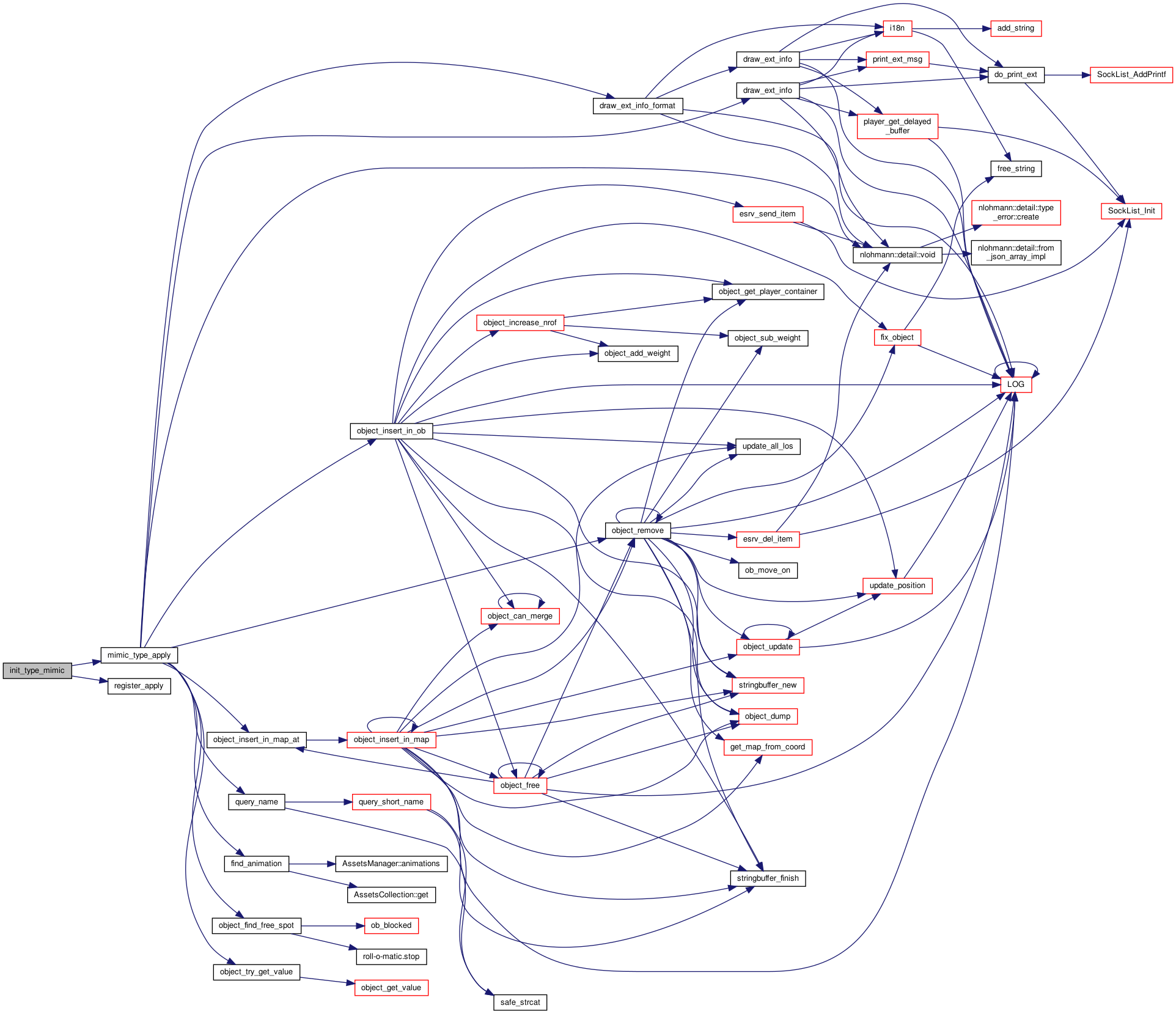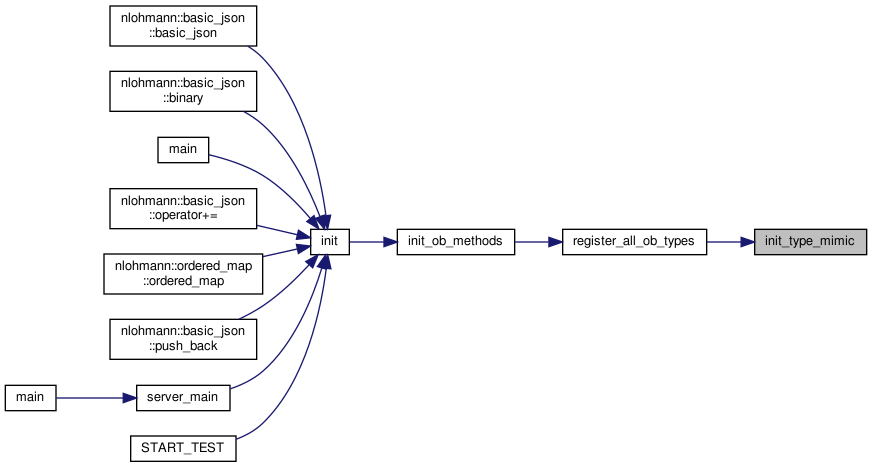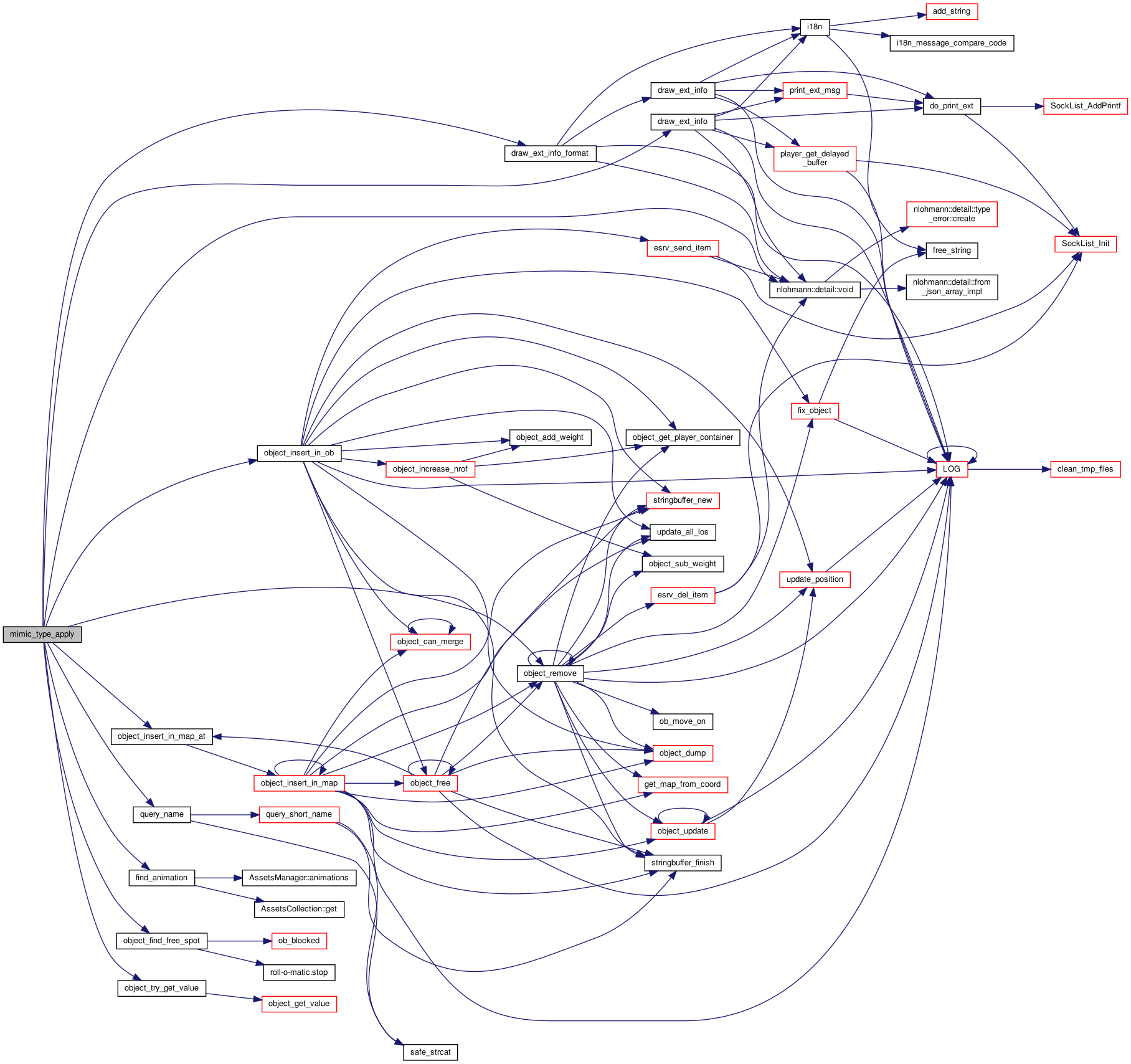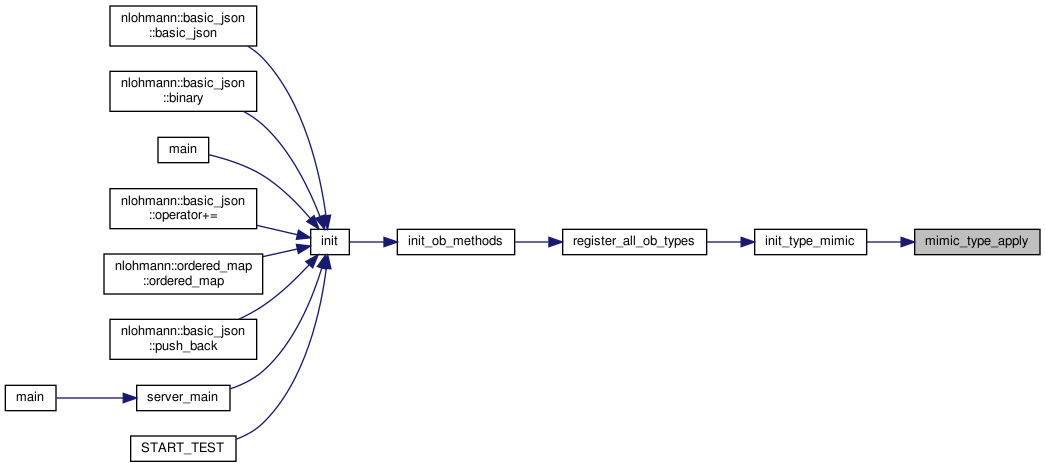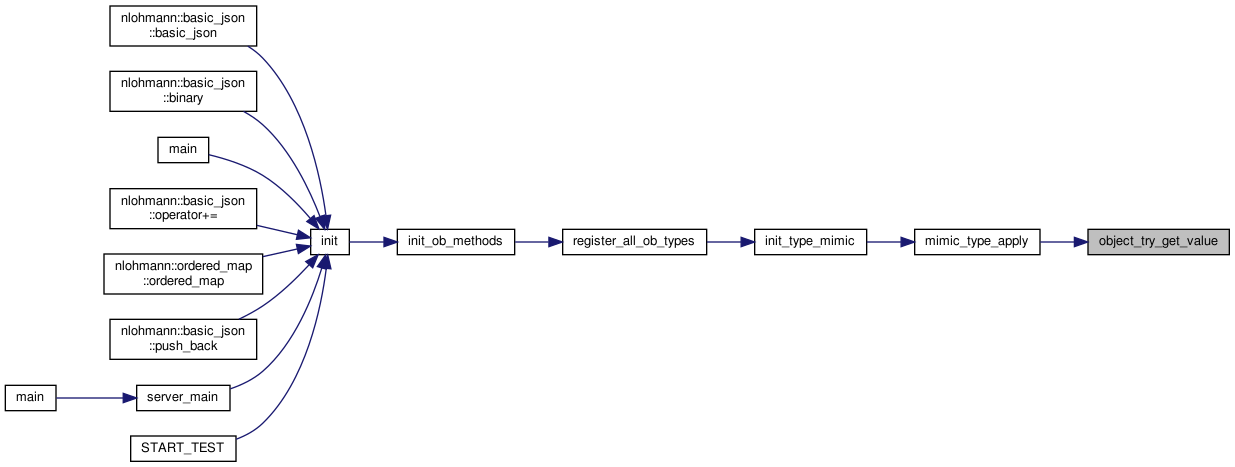#include <global.h>#include <ob_methods.h>#include <ob_types.h>#include <sounds.h>#include <sproto.h>#include <string.h>#include <stdlib.h> Include dependency graph for mimic.c:
Include dependency graph for mimic.c:Go to the source code of this file.
Functions | |
| void | init_type_mimic (void) |
| static method_ret | mimic_type_apply (object *op, object *applier, int aflags) |
| static const char * | object_try_get_value (object *op, const char *key) |
Function Documentation
◆ init_type_mimic()
| void init_type_mimic | ( | void | ) |
Initializer for MIMIC type.
Definition at line 43 of file mimic.c.
References MIMIC, mimic_type_apply(), and register_apply().
Referenced by register_all_ob_types().
 Here is the call graph for this function:
Here is the call graph for this function: Here is the caller graph for this function:
Here is the caller graph for this function:◆ mimic_type_apply()
|
static |
Implementation of mimics This should be usable for any item masquerading as a container (or other item, for that matter) that activates when you try to pick it up or apply it.
Handles applying a mimic. It just becomes a monster and gains an animation.
- Parameters
-
op The object being applied applier The object doing the applying aflags Special flags
- Return values
-
METHOD_UNHANDLED If a non-player tries to open it. METHOD_OK If a player does the opening.
Definition at line 61 of file mimic.c.
References draw_ext_info(), draw_ext_info_format(), env, FABS, find_animation(), FLAG_ALIVE, FLAG_ANIMATE, FLAG_MONSTER, FREE_AND_COPY, freearr_x, freearr_y, level, MAX_BUF, METHOD_OK, METHOD_UNHANDLED, MIMIC, MONSTER, MSG_TYPE_APPLY, MSG_TYPE_APPLY_FAILURE, MSG_TYPE_APPLY_SUCCESS, give::name, NDI_UNIQUE, object_find_free_spot(), object_insert_in_map_at(), object_insert_in_ob(), object_remove(), object_try_get_value(), give::op, PLAYER, query_name(), SET_FLAG, SIZEOFFREE, obj::type, and nlohmann::detail::void().
Referenced by init_type_mimic().
 Here is the call graph for this function:
Here is the call graph for this function: Here is the caller graph for this function:
Here is the caller graph for this function:◆ object_try_get_value()
|
inlinestatic |
Definition at line 47 of file mimic.c.
References castle_read::key, object_get_value(), and give::op.
Referenced by mimic_type_apply().
 Here is the call graph for this function:
Here is the call graph for this function: Here is the caller graph for this function:
Here is the caller graph for this function:
